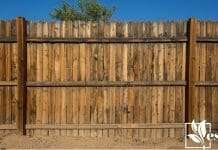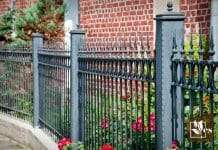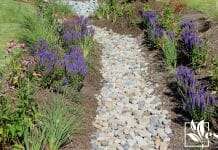Fence gap filler ideas are way too common these days. Every other person needs to fill in the gaps between their fences, avoid getting their house trespassed, or have their pets escape into the unknown world.
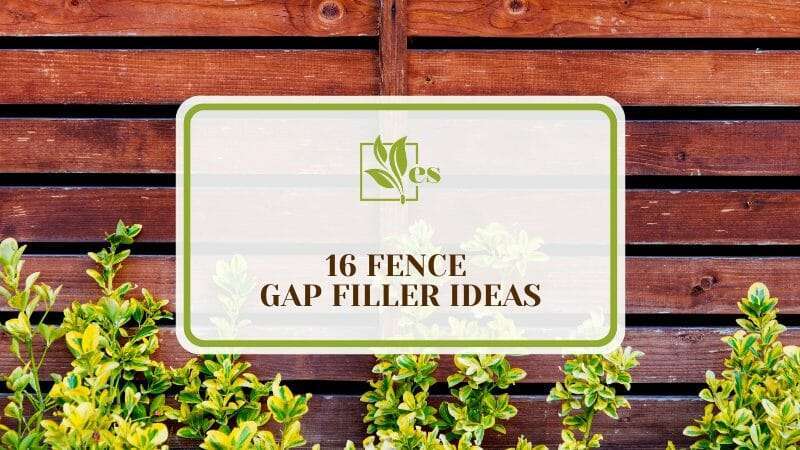
However, did you know that you can fill your fence gaps and have it look good while protecting you? Here are some ideas we have complied with that will make your fence look appealing, all while it is filled between the gaps.
JUMP TO TOPIC
- List of Fence Gap Filler Ideas
- 1. Placing Dirt or a Mound
- 2. Using Wires to Seal the Fence Gap
- 3. Filling It With Gravel
- 4. Using a Bottom Lattice
- 5. Wooden Pockets for Filling in Gaps
- 6. Adding a Kickboard
- 7. Building a Brick Wall
- 8. Hedging the Fence Gaps
- 9. Using a Chain-link Fence
- 10. Using Wooden Panels
- 11. Adding Metal Bars
- 12. Adding Platforms
- 13. Covering Your Gaps With Bricks
- 14. Adding a Small Garden
- 15. Using Cement to Fill in the Gaps
- 16. Installing a Small Gate
List of Fence Gap Filler Ideas
1. Placing Dirt or a Mound
Starting easy, close the gaps, add dirt and create a mound, in the empty spaces. The soil must be compacted tightly. Dogs are excellent at digging, so keeping them safe is not very effective. A mound or adding dirt is usually enough filler choice if you don’t have pets and are searching for affordable solutions.
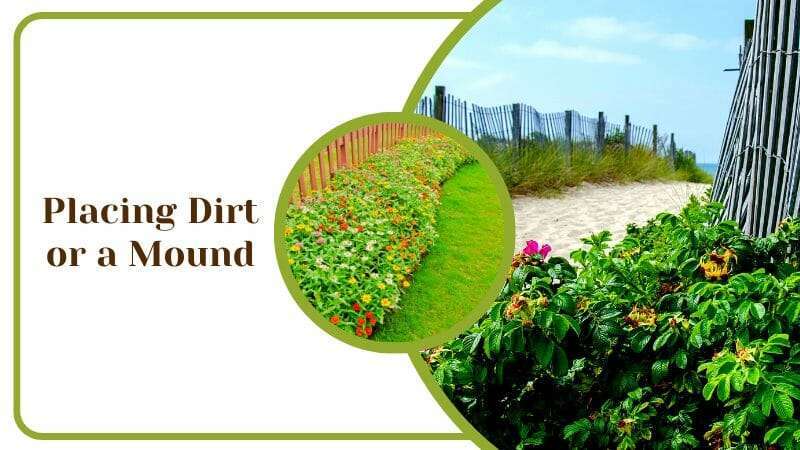
2. Using Wires to Seal the Fence Gap
Gardens are a safe haven for snakes and other crawlies. They easily slide through the fence gap and reach your lawn and garden. Using aluminum or galvanized wire mesh is the best way to keep snakes out of your area.
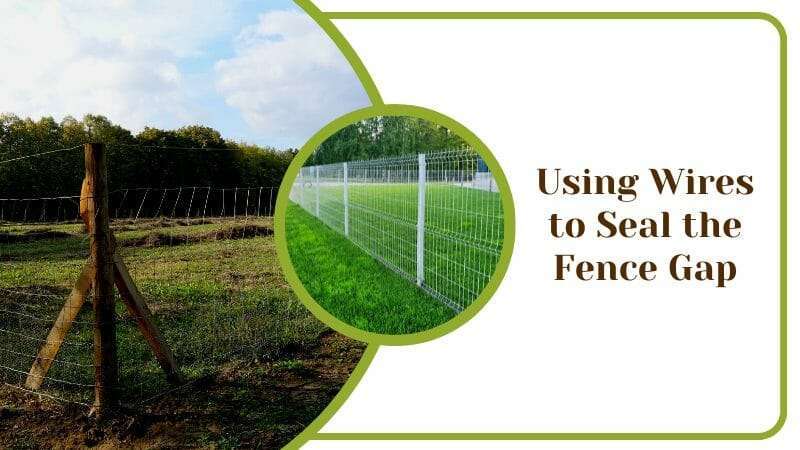
Here, you must select the smallest opening for the wire mesh fence. When you go for the bigger opening, it won’t do its job of keeping the unwanted rodents and reptiles away.
Using chicken wire here is a life hack because it is easily available in the market for the purchase and easy to bend. You are probably already using it around your decorative garden fence.
3. Filling It With Gravel
Contact your neighborhood gravel dealer if you’re looking for cheap yet sturdy alternatives to fill fence gaps.
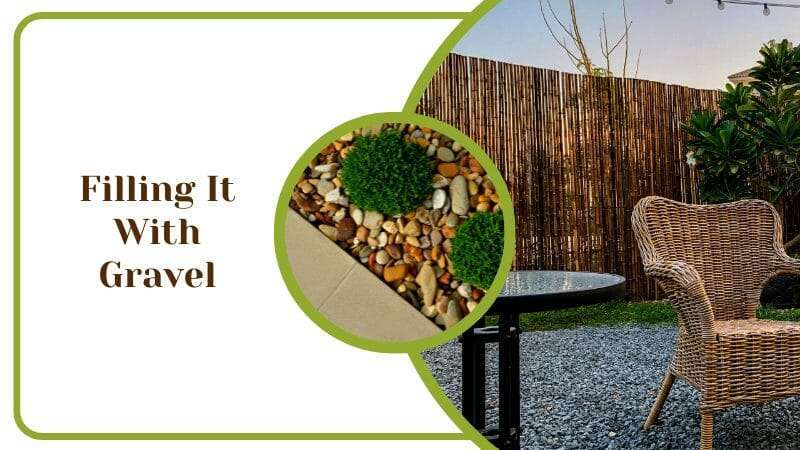
Fill the gaps in the ditches along the fence line with as many bags of gravel as are necessary. Pick the gravel shade that will complement your fence the most. White gravel is the most popular choice since it appears more original and artistic.
In addition, using gravel can assist in the control process of the development of weeds and herbs like ivy and dandelions.
4. Using a Bottom Lattice
Rats and raccoons can be effectively kept out of the lawn using bottom lattices. They have no possibility of breaking through the lattice. It’s one of the most tried-and-true techniques for preventing pests from entering the home.
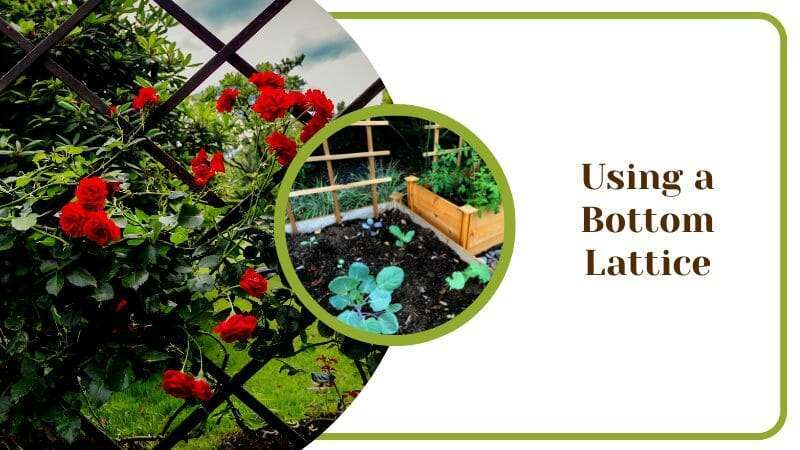
You must note that lattices are typically constructed from wood, metal, or vinyl strips. If you don’t mind spending a little bit more, it’s also a nice cosmetic choice because lattice fence may be pricey. However, vinyl fences might have some gaps, but you can easily fill them out.
5. Wooden Pockets for Filling in Gaps
This method is similar to filling the gap in your fence with bricks. To fill the space between the fence and the ground, use horizontal pieces of wood rather than bricks. Cut the wooden boards uniformly after measuring them. This is one of the best choices if you have a wooden fence because it will blend in flawlessly.
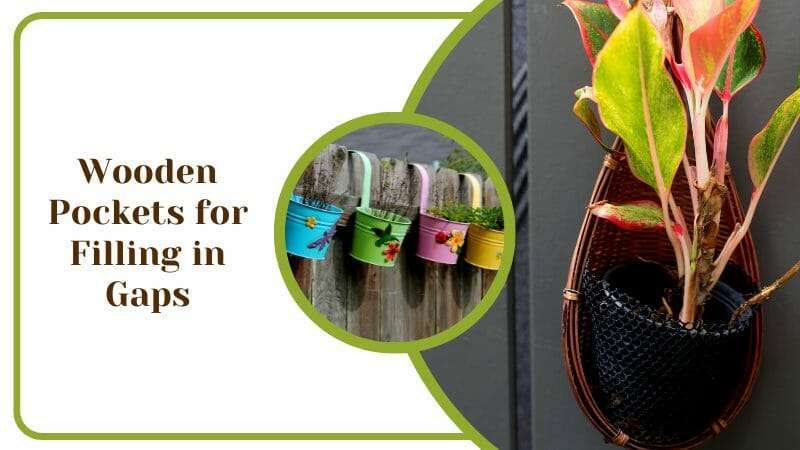
6. Adding a Kickboard
A weed board is another name for a kickboard. For larger gaps, you can add a kickboard over the fence. The board should be cut to the exact number of inches needed to cover the opening.
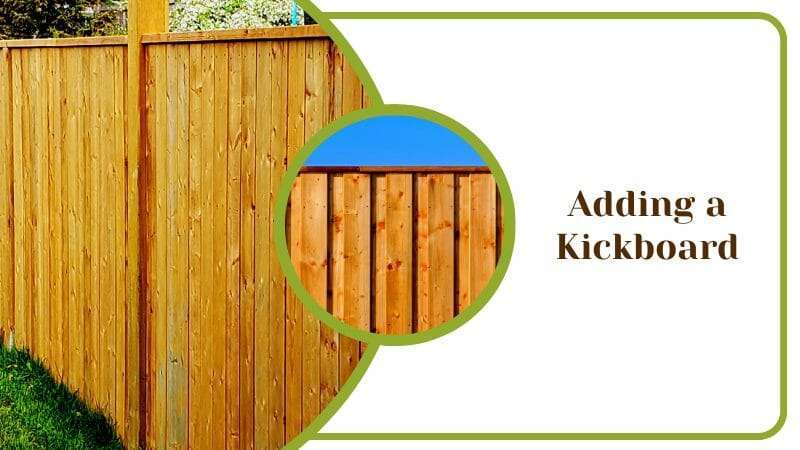
Cut it longer and sink it deeper if you want to be extra cautious. Always use rot-resistant wood, such as redwood or cedar. Nonetheless, note that the wood’s bottom is susceptible to decay.
7. Building a Brick Wall
One of the most expensive alternatives on this list would have to be building a wall. But if you’re worried about the safety of your house, this is the best course of action. To conceal the opening and give your yard a classic Roman appearance, you can have a stonewall built under your fence.
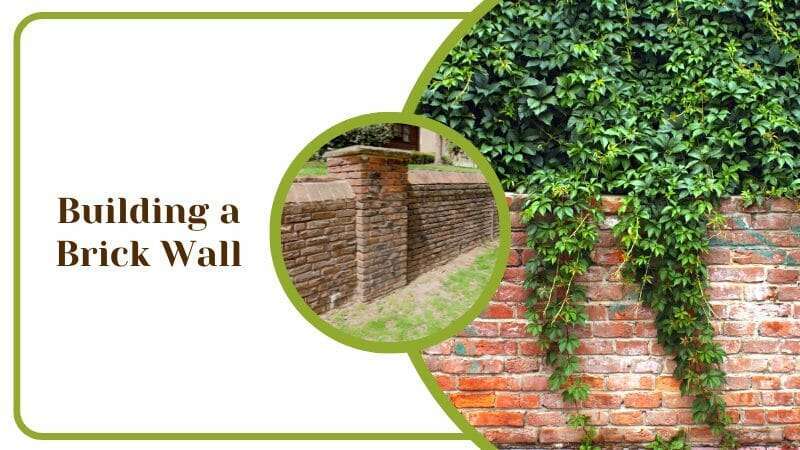
However, as we said: this is quite an expensive option. Plus, this takes more time and effort than any other simpler option.
8. Hedging the Fence Gaps
The greatest strategy for a green fence is to hedge the gaps. Bushes or trees are planted close together to create hedges. Hedge plants come in two varieties. The initial one produces leaves.
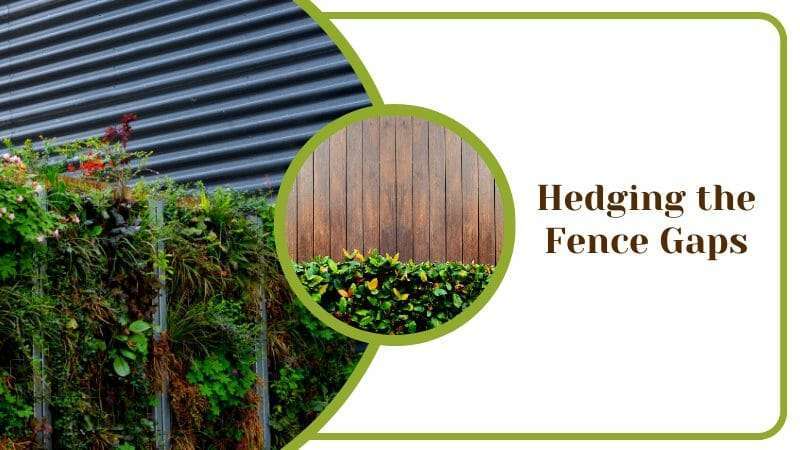
The other kind allows for the growth of flowers. Choose the latter if you want to improve how your yard looks. Add flowers to your garden, like golden dew droplets.
Think of how nice this would look. You would increase not only the looks of your fence but also increasing the bio-diversity of your house. Good on you!
9. Using a Chain-link Fence
A chain link fence promises maximum security and protection. It makes your fences impossible to use for trespassing. Overall, note that this is the best option if you’re only concerned with practicality and function.
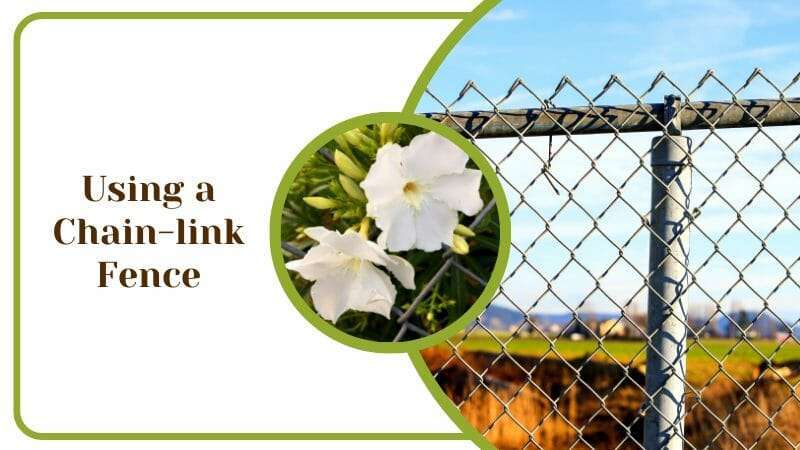
The only downside of this idea is that it will make your fences look boring and average. Instead, why not opt for fancy, chain-linked mesh fences with a pattern! The notion is simply because they’re not only impenetrable but also serve as a privacy fence.
10. Using Wooden Panels
If you don’t want to sacrifice the yard’s aesthetics, installing a wooden panel might be a perfect choice. Wood panels are straightforward and have many benefits, especially in the long term.
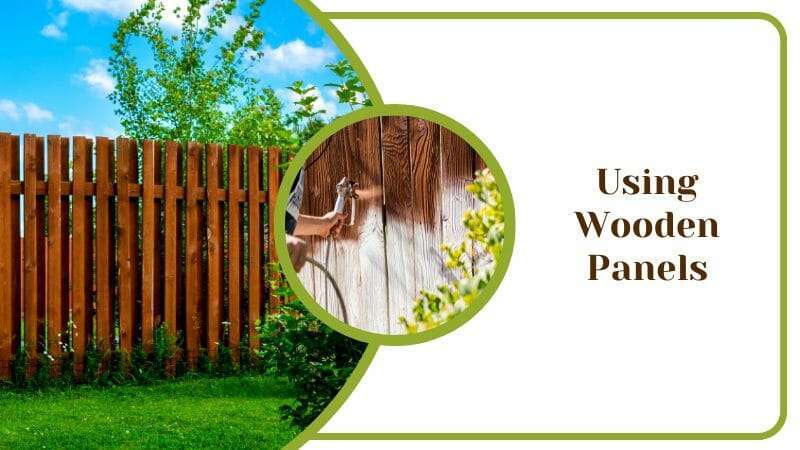
This is even though they can only be used to fill up little gaps. Be careful only to buy mold-resistant wood; after installing the wooden panels, you’ll apply the mold-resistant spray. These wooden fence panels can also be used as wood fence gap fillers. Usually, wood fences are not very tall, so if you need to extend their height, we have some great ideas for you.
11. Adding Metal Bars
The ideal solution is to add metal bars with a larger gap. The majority of pet owners choose this choice. Dogs can dig under a fence and get out. Metal bars can be inserted deeply into the earth. Although it lacks visual appeal, it performs a decent job of protecting your property.
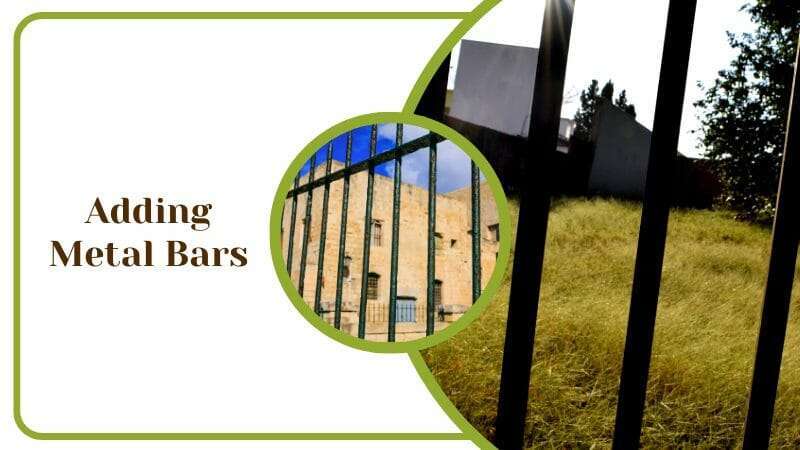
Plus, metal fences are quite the statement and very popular in today’s day and age. Especially those made of wrought iron.
12. Adding Platforms
Platform installation doesn’t need too much work. You can get creative and make your way through this project with no problem. This is because this is pretty simple. You can add platforms to your yard to fill in the gaps while giving it a stylish appeal. If you have pets, adding platforms is a terrific idea.
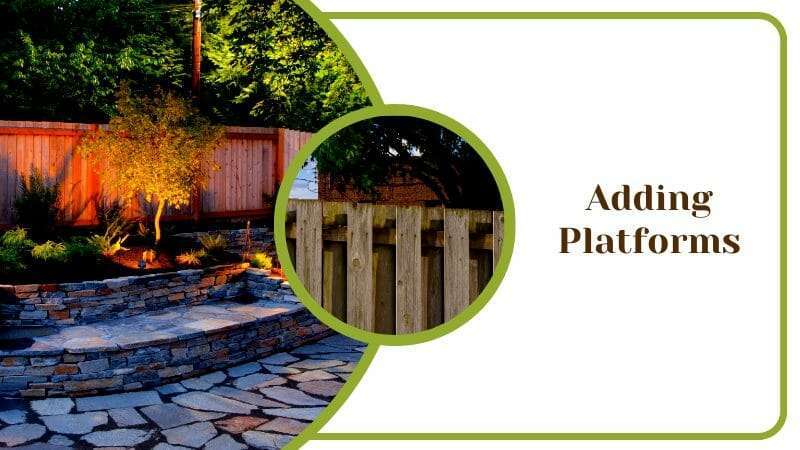
The panels will act like a barrier making your furry friends stay close to home. They won’t attempt to escape into the streets of your neighborhood and get lost.
The cool thing is that this also acts like a privacy fence.
13. Covering Your Gaps With Bricks
There are always going to be tiny openings and gaps in your fence. They either get made because of the natural sifting of the dirt in your yard or because people tend to keep touching them. Either way, you should give this a try.
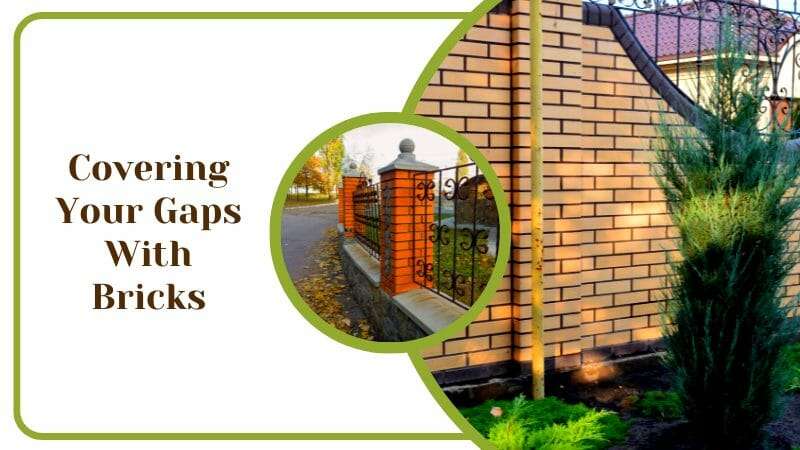
There is no reason to fret about closing the gap in this situation. All you must do is line the gap between the bricks and the ground. It’s a straightforward method that works wonders. This hack provides stability and is reasonably priced, you see, it’s a win-win situation!
14. Adding a Small Garden
Using a plant nursery to fill the fence gap is a terrific solution if you don’t want to use heavy alternatives like cement or bricks. Those who have green thumbs will benefit from this as a natural filter. It will cover the opening, safeguard your yard, and give your rustic fence a lovely natural touch.
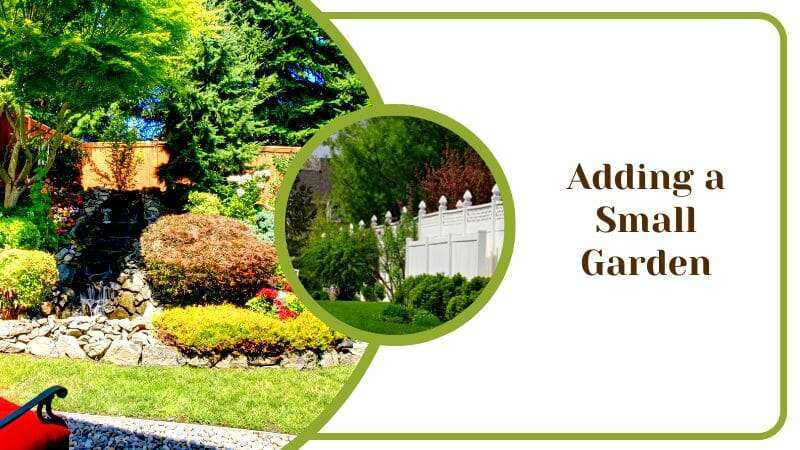
Plus, this can be used alongside the hedge idea for a natural-looking fence gap filler.
15. Using Cement to Fill in the Gaps
For the gap, cement terracing is a viable solution. Apply the cement to the gaps after the mixture has reached the proper texture and consistency.
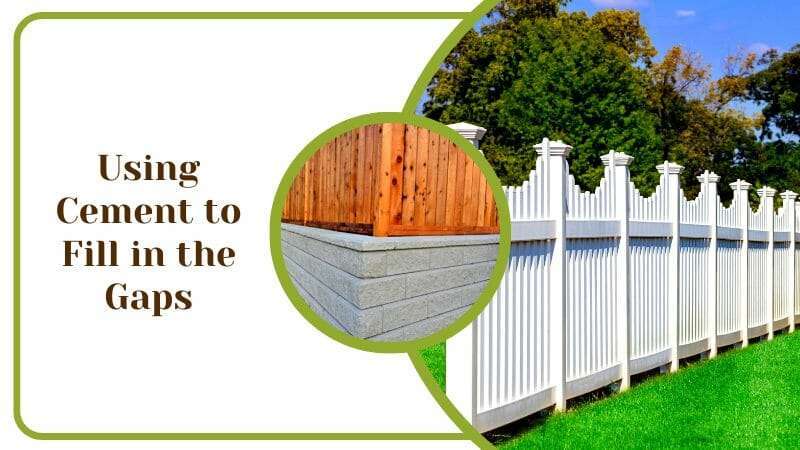
You can complete this as a DIY project by buying all the necessary supplies and equipment, including cement, a mixing bowl, sand, and water. Note that this is the key option for protecting your fence, house, privacy, and security.
16. Installing a Small Gate
Installing a small gate over the fence gap will cover it. You can build a little gate out of wood. That, or you can hire someone to do it for you.
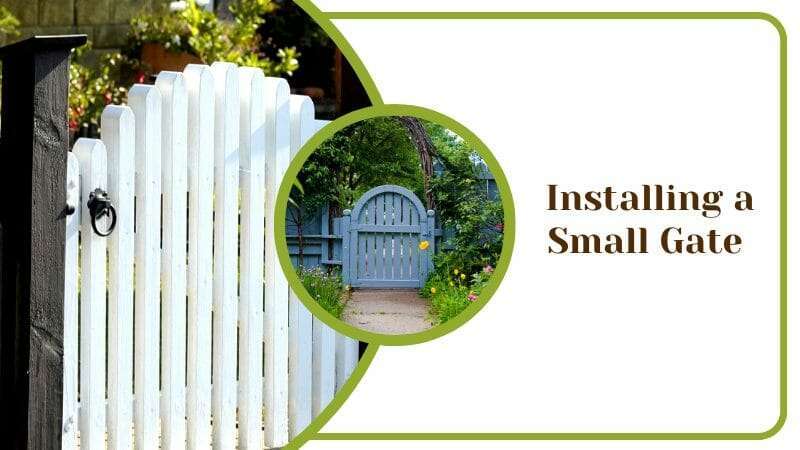
Use lumber and other materials to create door hinges. By doing this, the door will remain in place and be more difficult for dogs to unlock. This is a relatively inexpensive method of closing a fence gap.
For maximum protection, you can add a lock that you can use from the inside only. This way, only you can control when it is opened and when it must be locked. Plus, this will also add to the appearance of your fence, making it look more elegant and even fun if it is a really small door only for dogs.


